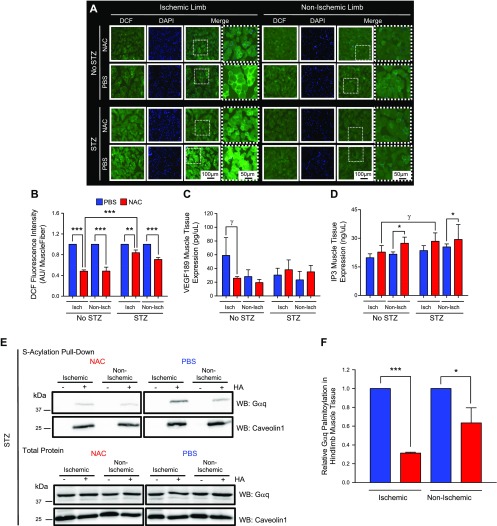Figure 3.
NAC blunts ischemic muscle tissue ROS and decreases Gαq palmitoylation. A) 2′,7′-Dichlorodihydrofluroescein diacetate–positive ischemic adductor hindlimbs demonstrated higher ROS compared with nonischemic hindlimbs. B) Diabetic mice treated with NAC demonstrated a less robust decrease in adductor muscle ROS compared with nondiabetic controls (n = 3). C) NAC does not stimulate VEGF expression in ischemic and/or nonischemic hindlimbs of diabetic mice. In nondiabetic mice, NAC appears to blunt VEGF expression in ischemic hindlimbs of diabetic mice (n = 3). D) NAC increases IP3 in nonischemic hindlimbs of diabetic and nondiabetic mouse hindlimbs (n = 3; 2-way ANOVA, P < 0.03). E, F) NAC does not affect total protein expression of Gαq or Caveolin1 (E); however, NAC decreased Gαq palmitoylation in ischemic and nonischemic hindlimbs. –HA samples served as negative controls for S-acyl capture assay (F). The difference in Gαq palmitoylation is greater in the ischemic tissue relative to the nonischemic tissue (E, F). Caveolin1 palmitoylation is not affected by NAC treatment in either ischemic or nonischemic hindlimb tissue (E). γP = 0.08, *P < 0.05, ***P < 0.001.

